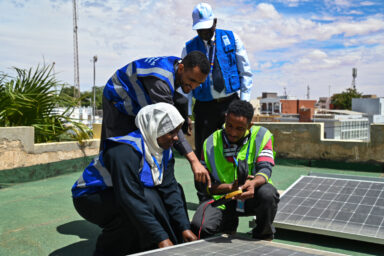PICKS are stories from many sources, selected by our editors or recommended by our readers because they are important, surprising, troubling, enlightening, inspiring, or amusing. They appear on our site and in our daily newsletter. Please send suggested articles, videos, podcasts, etc. to picks@whowhatwhy.org.
|
Listen To This Story
|
FBI Makes Botnet Infecting More Than 700,000 Computers Uninstall Itself (Maria)
The author writes, “The US government just helped dismantle a massive network of computers infected with one of the world’s most notorious pieces of malware. According to the FBI, a multinational effort led by the US took down Qakbot, a malware that made its way into over 700,000 computers around the globe. … To take down the network, the FBI routed Qakbot through FBI-controlled servers, where it instructed infected computers in the US and elsewhere to download software that uninstalled the Qakbot malware.”
They Invest in Black Women. A Lawsuit Claims It’s Discrimination. (Russ)
The author writes, “Edward Blum, whose lawsuit prompted the US Supreme Court to strike down the use of racial preferences in college admissions, targeted the Fearless Fund in early August, claiming it engaged in ‘explicit racial exclusion’ by operating a grant program ‘open only to Black females.’ The lawsuit — which asked the court to prevent the fund from selecting its next round of grant winners — is one of the most prominent in a flurry of recent lawsuits and legal claims by conservative activists aimed at applying the Supreme Court’s insistence on race-blind college admissions practices to the corporate sphere of hiring, contracting, and investment.”
How Europe Outsourced Border Enforcement to Africa (Al)
From In These Times: “The European Union is militarizing Africa’s internal borders to curb migration, with little regard for human rights.”
Suicide Watch Incidents in Louisiana Prisons Spike by Nearly a Third on Extreme Heat Days (Laura)
From Inside Climate News: “The number of suicide watch incidents in Louisiana prisons increased by 30 percent on extreme heat days, a recently published study in the JAMA Journal found. Researchers from Emory University analyzed data from 2015 to 2017 to examine how the heat index related to suicide watch incidents in six prisons. At the time, only one had air conditioning. Scientists classified days into six categories according to their average heat index, and also created an ‘extreme heat indicator’ for those that were hotter than 90 percent of the days. The number of people put under suicide watch increased 36 percent when the heat index was above 90 degrees and 30 percent on the extreme heat days, which in most cases were even hotter.”
Press Rights Groups Back Journalist Being Sued by L.A. to Claw Back Public Records (Reader Steve)
From the San Francisco Chronicle: “When a freelance journalist asked Los Angeles to send him names and photos of all of its police officers, city officials said they accidentally included pictures of officers who work undercover. Now a judge says the city can sue to recover the records, and the journalist, supported by a national press-freedom group, is appealing. ‘You can’t use a lawsuit to censor the press and forbid a member of the press from publishing records the government gave him,’ [said] Susan Seager, a UC Irvine law professor representing journalist Ben Camacho. ‘The information is already public, and you can’t try to take it back if it’s a matter of public concern.’”
That’s Not a Humongous Tornado on a Mountain Top in Montana, It’s a Rare ‘Land Spout’ (Sean)
The author writes, “The image is confusing. Is that really a tornado touching down on a mountaintop in Montana? The video of a funnel cloud high up in the Mission Mountains in western Montana on May 9 is both fascinating and could be alarming to Wyoming residents who don’t think tornados can happen in the mountains. But Cowboy State Daily meteorologist Don Day said appearances may be deceiving. ‘It actually was not in the mountains, it’s in front of the mountains,’ he said. ‘It’s kind of one of those optical illusions, where the perspective really does look like it’s touching down on the mountains, when in reality that was not the case.’”




